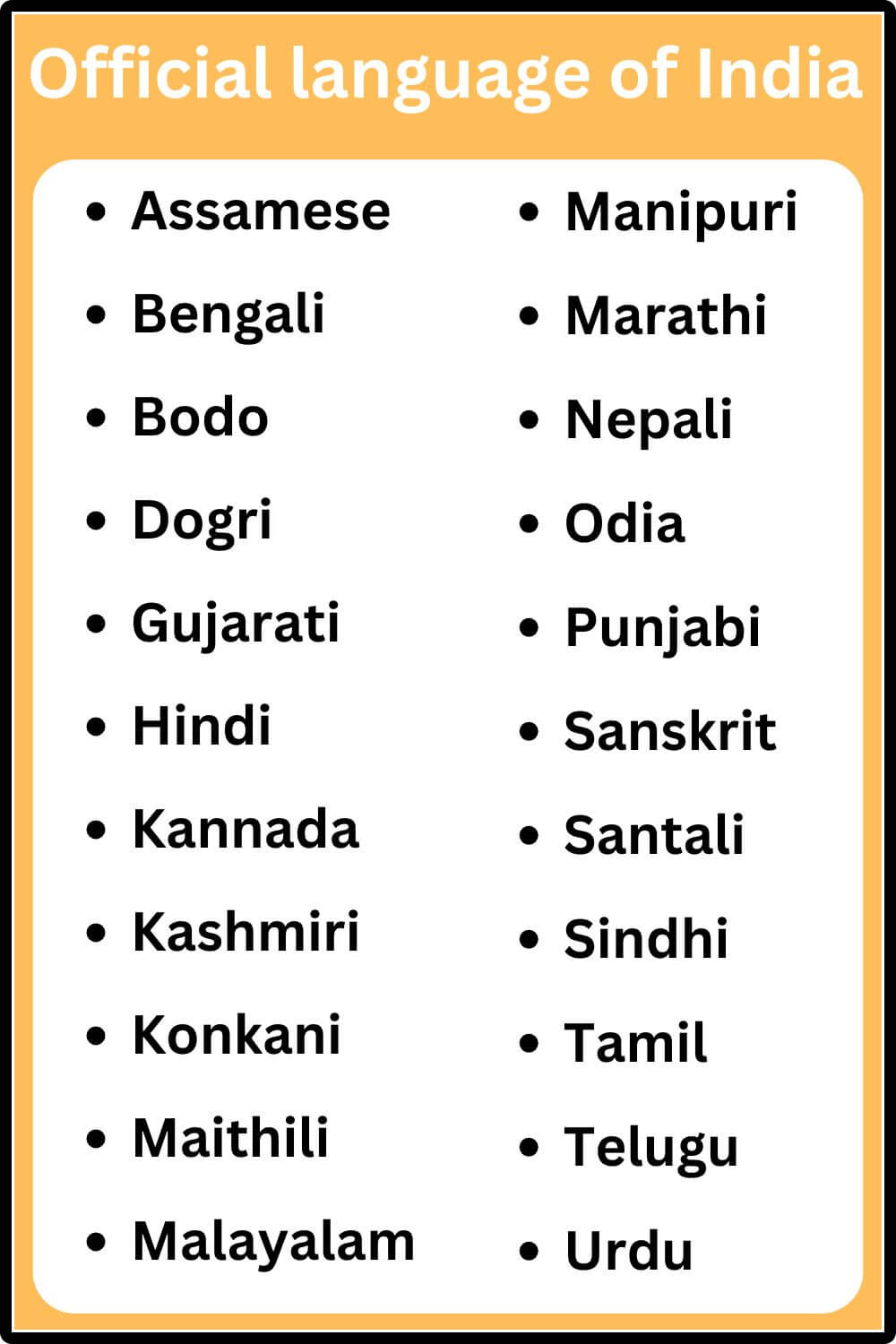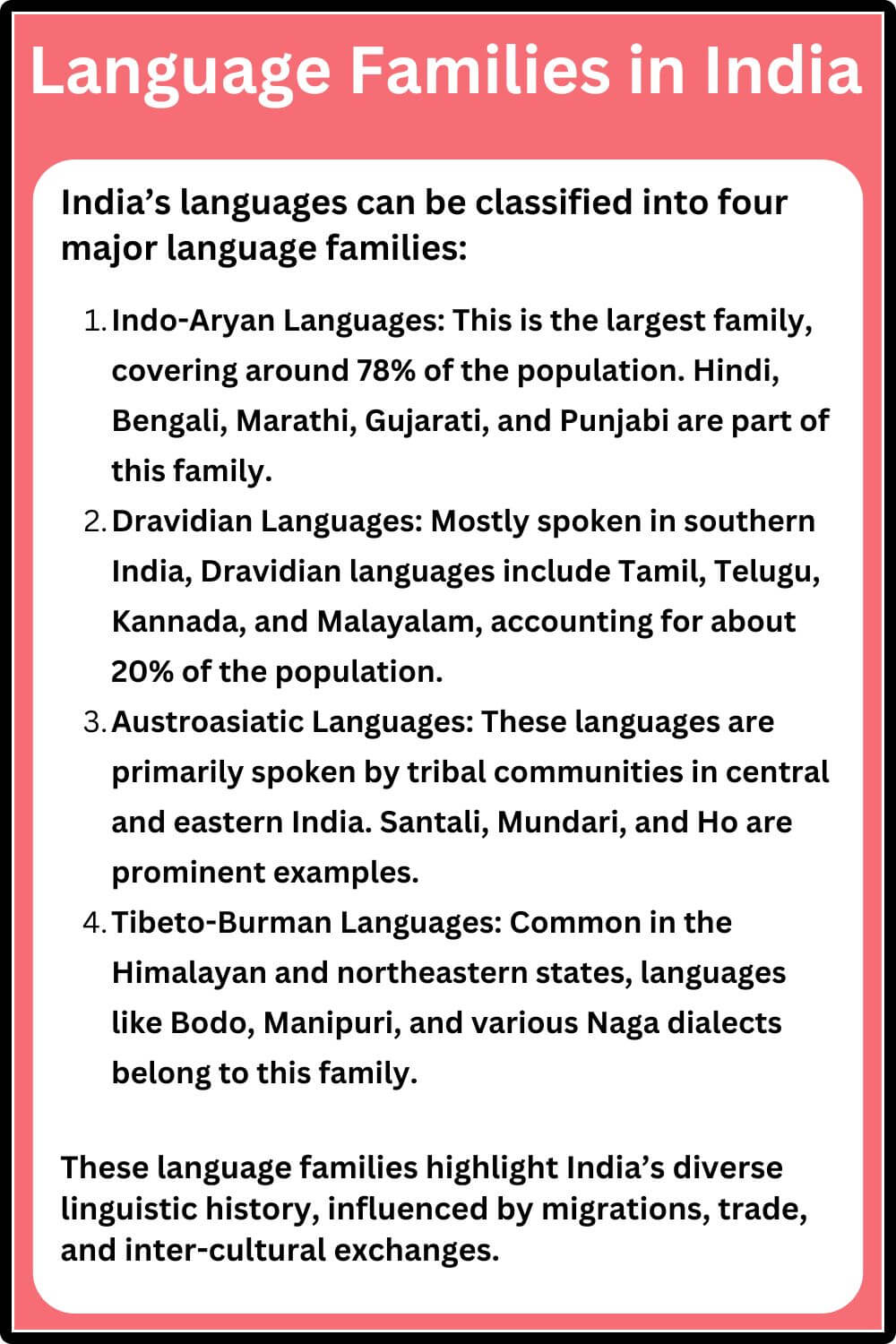How many languages are spoken in India? With one of the richest and most diverse linguistic landscapes in the world, India is home to hundreds of languages that reflect the nation’s cultural heritage. For anyone fascinated by languages or India’s culture, exploring the many languages spoken in India reveals a story of regional pride, history, and cultural variety.
India’s multilingualism isn’t just a feature of its population but a deep-rooted part of its identity. In this article, we’ll break down the primary languages, the official languages, and why so many different dialects thrive in India.
India’s Linguistic Diversity
How many languages are spoken in India ? India is home to 22 officially recognized languages listed in the Indian Constitution’s Eighth Schedule, alongside over 1,600 dialects spoken across various regions. With such diversity, India showcases an extraordinary linguistic mosaic, reflecting the historical interactions, migrations, and evolutions that have occurred over thousands of years.
How Many Languages Are Officially Recognized in India?
India’s Constitution acknowledges 22 official languages, allowing each state or territory to choose one or more languages for administrative purposes. These languages include widely spoken ones like Hindi, Bengali, Telugu, and Tamil, as well as others like Sanskrit and Urdu. This list aims to preserve and promote the languages that define India’s cultural and social identity.

The 22 official languages of India are:
- Assamese
- Bengali
- Bodo
- Dogri
- Gujarati
- Hindi
- Kannada
- Kashmiri
- Konkani
- Maithili
- Malayalam
- Manipuri
- Marathi
- Nepali
- Odia
- Punjabi
- Sanskrit
- Santali
- Sindhi
- Tamil
- Telugu
- Urdu
Each of these languages has a distinct literary and cultural history, with Hindi recognized as the official language of the Indian government and English serving as an associate official language for national communication, especially in official and educational contexts
Regional Languages and Dialects: Beyond the 22
India is renowned for its linguistic diversity at the regional level, where dialects and lesser-known languages thrive. According to the People’s Linguistic Survey of India (PLSI), over 1,600 dialects are spoken across the country. These dialects may vary significantly from the officially recognized languages, with unique pronunciation, vocabulary, and grammar.
For example:
- Rajasthani is spoken in Rajasthan, with several dialects like Marwari, Mewari, and Shekhawati.
- Bhili and Gondi, two languages spoken by tribal communities, are widely used across central India.
- In the Northeast, languages such as Mizo, Khasi, and Naga dialects reflect the distinct cultural practices of these communities.
Language Families in India
India’s languages can be classified into four major language families:
- Indo-Aryan Languages: This is the largest family, covering around 78% of the population. Hindi, Bengali, Marathi, Gujarati, and Punjabi are part of this family.
- Dravidian Languages: Mostly spoken in southern India, Dravidian languages include Tamil, Telugu, Kannada, and Malayalam, accounting for about 20% of the population.
- Austroasiatic Languages: These languages are primarily spoken by tribal communities in central and eastern India. Santali, Mundari, and Ho are prominent examples.
- Tibeto-Burman Languages: Common in the Himalayan and northeastern states, languages like Bodo, Manipuri, and various Naga dialects belong to this family.
These language families highlight India’s diverse linguistic history, influenced by migrations, trade, and intercultural exchanges.

Why Are There So Many Languages in India?
India’s linguistic variety results from its historical diversity, geography, and complex social structure. Over centuries, people in different regions developed unique languages and dialects as a way to reflect their community identity and values. Additionally, factors like isolation by natural barriers and the influence of empires that promoted different languages helped foster a multi-linguistic society.
India’s freedom to embrace many languages has also been a crucial part of this evolution. Indian society has a history of celebrating diversity, and language is no exception. Government policies, literature, film, and education help sustain the prominence of various languages.
Endangered Languages in India
India’s vibrant linguistic landscape is under threat as some languages are becoming endangered. UNESCO has identified 197 Indian languages as endangered. As younger generations move towards urban areas and adopt widely spoken languages like Hindi and English, smaller regional languages and dialects face the risk of extinction.
Efforts to preserve these endangered languages include government initiatives, NGOs focused on linguistic preservation, and educational programs to teach children these languages.
The Role of English in Modern India
While India’s linguistic diversity is unmatched, English plays a significant role as a unifying language, especially in urban areas and professional spaces. English is an official language, widely used in government administration, business, and education. As a result, it bridges the gap between people who speak different regional languages and serves as a common language in India’s diverse society.
Frequently Asked Questions (FAQs)
-
How many languages are spoken in India?
India is home to 22 officially recognized languages and over 1,600 dialects.
-
What are the most spoken languages in India?
Hindi is the most spoken language, followed by Bengali, Telugu, Marathi, and Tamil.
-
Which language family has the most speakers in India?
The Indo-Aryan family has the most speakers, covering nearly 78% of the population.
-
Are there any endangered languages in India?
Yes, India has nearly 197 endangered languages, mostly spoken by small tribal communities.
-
Why is English widely used in India?
English serves as an associate official language and is used in government, education, and business, unifying people across different regions.
Conclusion
India’s linguistic diversity is a testament to its cultural heritage and adaptability. With 22 official languages and over 1,600 dialects, India’s languages reflect a unique and multifaceted identity that few other nations possess. As India continues to modernize, efforts to preserve endangered languages while promoting linguistic unity will be vital in keeping this cultural heritage alive.
India’s languages aren’t just a means of communication; they’re a living history of its people, evolving with time while staying true to their roots. Understanding India’s languages offers a deeper insight into the country’s heart and soul.

